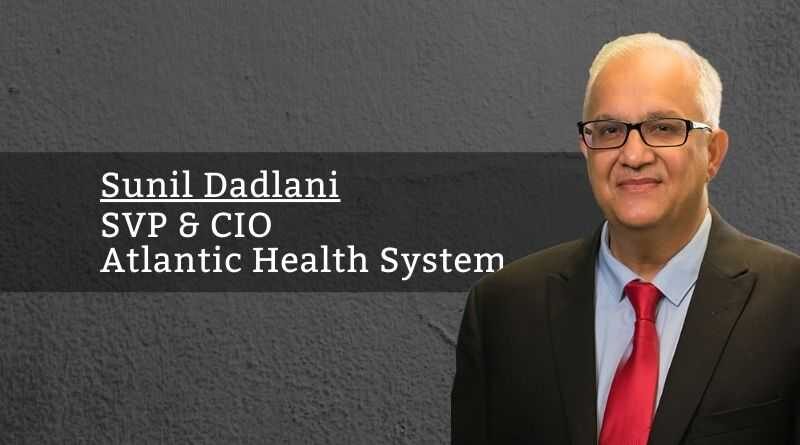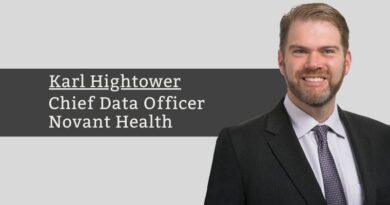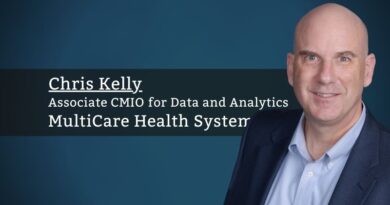Using AI and Big Data to Improve Medical Imaging and Care Outcomes
By Sunil Dadlani, SVP & CIO, Atlantic Health System
As health systems navigate their way through an unparalleled age of technological advancement, CIOs can tap into an overwhelming number of state-of-the-art solutions capable of driving their digital transformation strategies forward. From wearables to mobile health devices, augmented reality to machine learning, the choices are seemingly endless.
And while all this technology is captivating, it also can be blinding. It’s too easy for health systems to let technology run the business of health care. Instead, it’s the business of health care that must drive the technology, because digital transformation will only make a real impact on a health system if it ultimately helps to improve care delivery and patient outcomes.
We’re fortunate at Atlantic Health System to have innovative, diverse leadership and a team of health care professionals covering a span of generations—baby boomers, Gen Z’ers, millennials and Gen X’ers—that embody this philosophy. Working together, we tackle digital transformation with a single question: What is the problem we’re trying to solve? Many times, the answers come from the clinical side rather than the technical side.
This methodical, collaborative approach gives us a system of checks and balances that ensures the technologies we invest in will help us achieve a specific ROI. It also allows us to make technological enhancements that augment—and not replace—the care our health care professionals deliver. We always include the human element in our workflows to strengthen the patient-clinician bond.
Over the past 12 – 18 months, we’ve seen encouraging results from two particular technologies: AI and Big Data. In both cases, the primary measurement is how well these solutions can help health care professionals treat disease sooner, creating better health throughout the communities we serve.
How AI enhances Medical Imaging
As Atlantic Health System grows and cares for more people, delivering highly sophisticated medical imaging takes high priority. As we searched for optimal imaging solutions, we prioritized technology that could help our radiologists and health care professionals get more efficient, find abnormalities faster and contact patients sooner for follow-up tests and appointments that can save lives.
To achieve these goals, we implemented three highly integrated solutions. The first, a modern picture archive and communication system (PACS), streamlines the entire radiology workflow.
By integrating our PACS solution with our Epic EHR, our radiologists can now access patient information and images from a single cloud-based system with enterprise-grade security that offers enhanced protection from ransomware and other malicious attacks. Our clinicians report high satisfaction with the quality of images on our new PACS system.
The second tool in our radiology arsenal is a FDA-approved decision support software solution. It uses AI to scan large volumes of images (such as CT scans), flag images that contain abnormalities and move them to the top of a radiologist’s or health care professional’s to-do list.
While the technology flags suspected acute pathologies, the human element is the key factor in this workflow. That’s because it’s the clinician who reviews the flagged images, identifies potential life-threatening anomalies—intracranial hemorrhage, acute spinal fractures, pulmonary emboli—and expedites patient care so patients with the most acute needs get seen right away.
Rounding out our medical imaging technology cycle is a radiology report management solution. It uses AI and NLP to comb through clinical notes and imaging scans. It then notifies the care team if and when patients need to follow up. This helps our health care professionals close the loop with patients faster and find potential diseases earlier.
We used EDAP data to identify potential COVID-19 hot spots and quickly ramp up supplies, staffing and resources in facilities that served those communities.
Viewing Big Data from an enterprise-level
Most businesses today are ingesting more data than ever before, and health care is no exception. However, most health care organizations have data spread across multiple legacy systems or locked in department-specific silos, which reduces the ability to act on that data. We faced the same challenge of bringing data together so we could make optimal business decisions.
Our answer: building an Enterprise Data and Analytics Platform (EDAP). The EDAP solution gathers data from 63 different sources, including our Epic EHR, claims data, health quality data, financial data and more. EDAP allows us to ingest, curate, create and model data, giving us a robust data pipeline capable of creating predictive and prescriptive models.
In addition to investing in EDAP, we’ve recruited highly skilled data scientists and aligned them with each vertical inside our health system. The expertise of our data analysts, combined with EDAP technology, allows us to identify operational, financial and clinical efficiencies and ultimately improve patient care.
One real-world example of how EDAP benefits patient care came during the COVID-19 pandemic. We used EDAP data to identify potential COVID-19 hot spots and quickly ramp up supplies, staffing and resources in facilities that served those communities.
Fueling adoption of innovative technologies
Implementing emerging AI-powered technologies and other modern solutions is just one part of the battle. The second is fully adopting them. At Atlantic Health System, we incorporate both e-learning and in-person instruction to make sure all health care professionals and users know how to use the technology, understand the workflow and interpret the data they’re reviewing, fueling widespread adoption and competency.
And while AI and Big Data are showing the best results for us right now, we’re also introducing many other emerging platforms—from customer experience technology to machine-learning-driven solutions and even augmented reality. Each is at a different maturity level. By looking at these solutions through the lens of problem-solving, then taking a pragmatic approach to implementation and training, we’ll keep developing innovations that help us expand the number of people we can help in our communities and enhance the care we provide them.



